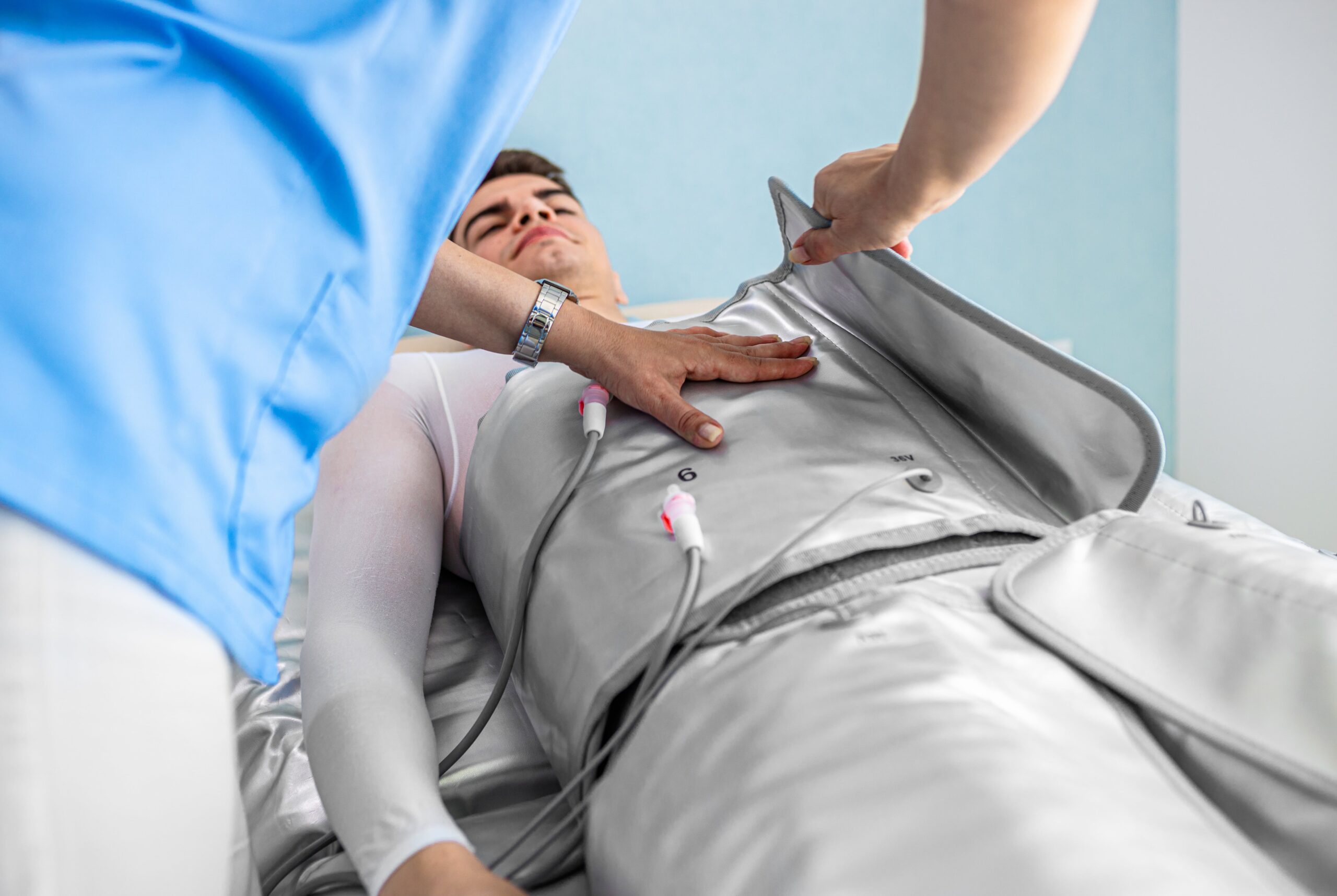Electrical Muscle Stimulation (EMS) has emerged as a valuable tool in various fields, including rehabilitation, sports training, and fitness. At its core, EMS involves the application of electrical impulses to stimulate muscle contractions artificially. Understanding the biomechanics behind this process is essential for maximizing its effectiveness and ensuring safe application.
The Interaction Between Electrical Impulses and Muscle Fibers:
Muscle contraction is primarily regulated by electrical signals from the nervous system. When a motor neuron sends a signal to a muscle fiber, it triggers a series of events that result in muscle contraction. EMS mimics this process by delivering electrical impulses directly to the muscle fibers, bypassing the nervous system.
The key to inducing muscle contractions with EMS lies in the ability of electrical impulses to depolarize the muscle cell membrane. When an electrical stimulus is applied to the muscle, it disrupts the normal resting potential of the cell membrane, causing ions to flow in and out of the cell. This influx of ions triggers a cascade of biochemical events that ultimately lead to muscle contraction.
Types of Muscle Fibers and Their Response to EMS:
Muscles are composed of different types of muscle fibers, each with unique characteristics and responses to electrical stimulation. Skeletal muscles contain both fast-twitch and slow-twitch muscle fibers, which vary in their contractile properties and fatigue resistance.
Fast-twitch muscle fibers are highly responsive to electrical stimulation and contract rapidly, making them well-suited for activities requiring explosive strength and power. In contrast, slow-twitch muscle fibers are more resistant to fatigue and are better suited for endurance activities.
The frequency and intensity of the electrical impulses delivered by EMS can influence the recruitment of different types of muscle fibers. Higher frequencies tend to activate fast-twitch fibers, while lower frequencies primarily target slow-twitch fibers. By adjusting these parameters, EMS can be tailored to target specific muscle groups and achieve desired training outcomes.
Underlying Physiological Mechanisms:
The physiological mechanisms underlying muscle contraction in response to EMS are complex and involve several interconnected processes. One key mechanism is the release of calcium ions within the muscle cell in response to depolarization of the cell membrane.
When the muscle cell membrane is depolarized by electrical stimulation, it triggers the release of calcium ions from the sarcoplasmic reticulum, a specialized structure within the muscle cell. Calcium ions bind to proteins within the muscle fibers, leading to the exposure of active sites on the actin filaments. This allows the myosin heads to bind to the actin filaments and initiate the sliding filament mechanism, resulting in muscle contraction.
Additionally, EMS can promote muscle growth and adaptation through mechanisms such as protein synthesis and cellular signaling pathways. Electrical stimulation has been shown to upregulate the expression of growth-related genes and promote the synthesis of muscle proteins, leading to increased muscle mass and strength over time.
Practical Considerations for Effective EMS:
To maximize the effectiveness of EMS, several practical considerations should be taken into account. These include proper electrode placement to ensure targeted stimulation of the desired muscle groups, as well as the selection of appropriate frequency and intensity settings based on individual goals and training objectives.
It’s also important to recognize that EMS is most effective when used as part of a comprehensive training program that includes other forms of exercise and conditioning. While EMS can provide valuable benefits, it should be supplemented with traditional resistance training, cardiovascular exercise, and proper nutrition for optimal results.
Conclusion:
In conclusion, the biomechanics of electrical muscle stimulation involve the interaction between electrical impulses and muscle fibers to induce contractions. By understanding the underlying physiological mechanisms and practical considerations for effective application, individuals can harness the full potential of EMS for rehabilitation, sports performance, and overall fitness enhancement. Continued research in this field promises to uncover new insights and innovations, further advancing our understanding of this valuable training modality.

Written by Diane Williams
More From This Category

Harnessing the Glow: Infrared Saunas and Skin Health
In an era where self-care rituals are revered, the quest for radiant, healthy skin has become a focal point for many. While skincare products and routines abound, there's a lesser-known ally in the pursuit of glowing skin: the infrared sauna. In this article, we'll...

Spa 411 Event June 2024 Learn Anti Aging Secrets
Join us at the Spa411 event on June 13th at 6 pm! We'll have drinks, snacks, and door prizes for everyone who comes. We'll also discuss our machines, how they can help reduce and reverse the signs of aging, and the science behind them. This is a great opportunity to...

Presso Massage Suit and Its Impact on Healthcare
In recent years, technological advancements have transformed the landscape of healthcare, offering innovative solutions to improve patient outcomes and enhance quality of life. Among these breakthroughs stands the Presso Massage Suit, a cutting-edge garment that has...
0 Comments